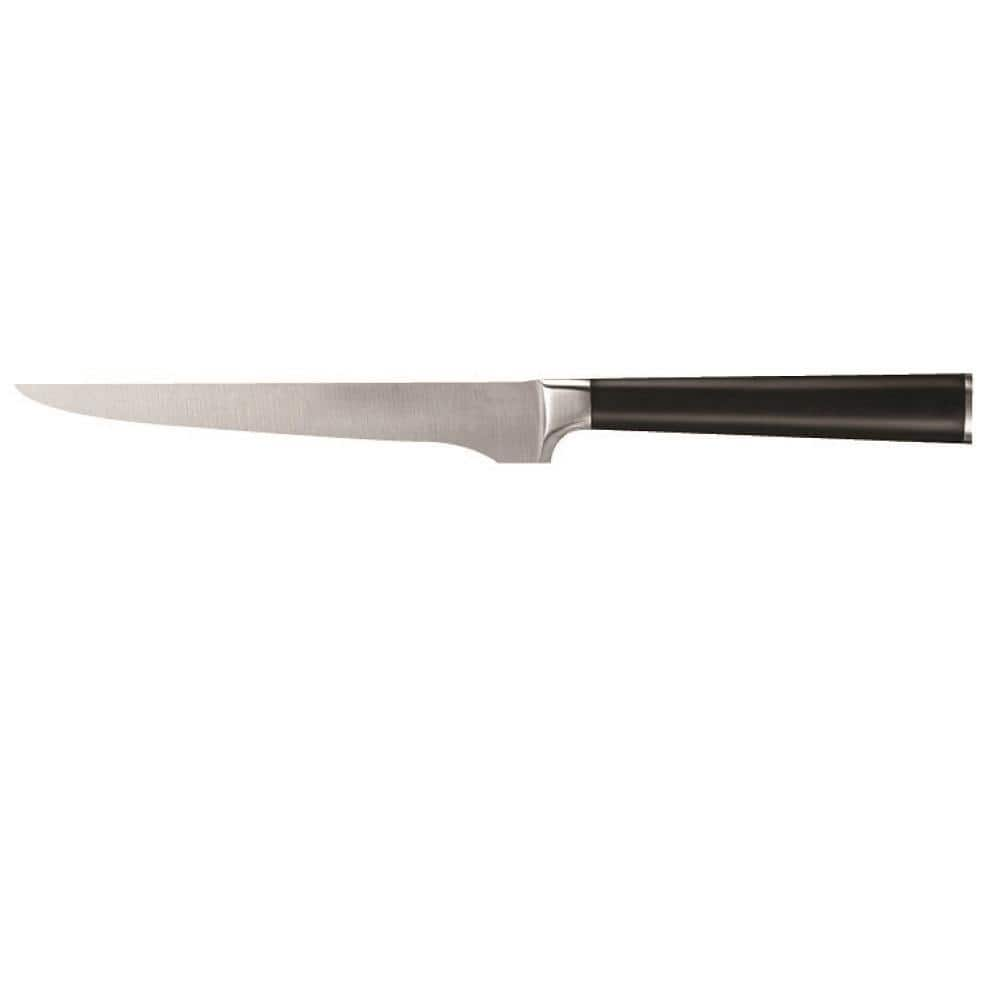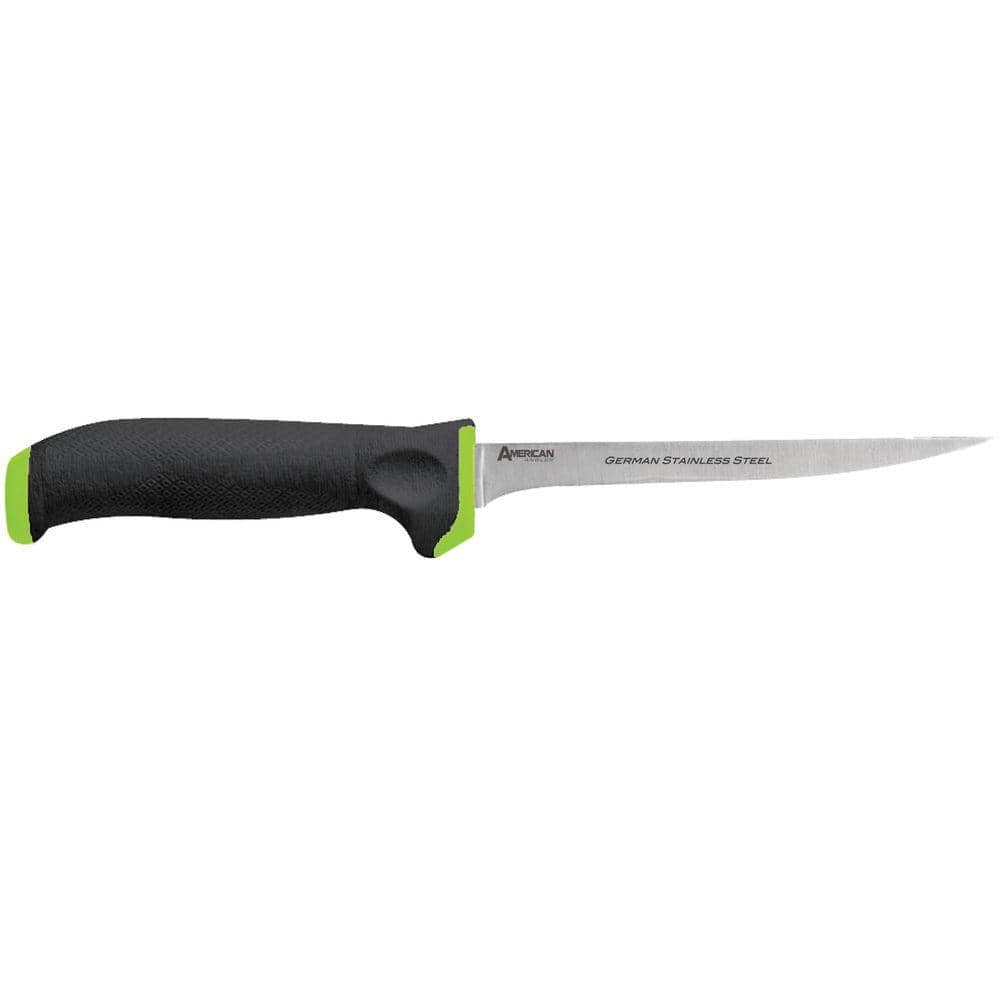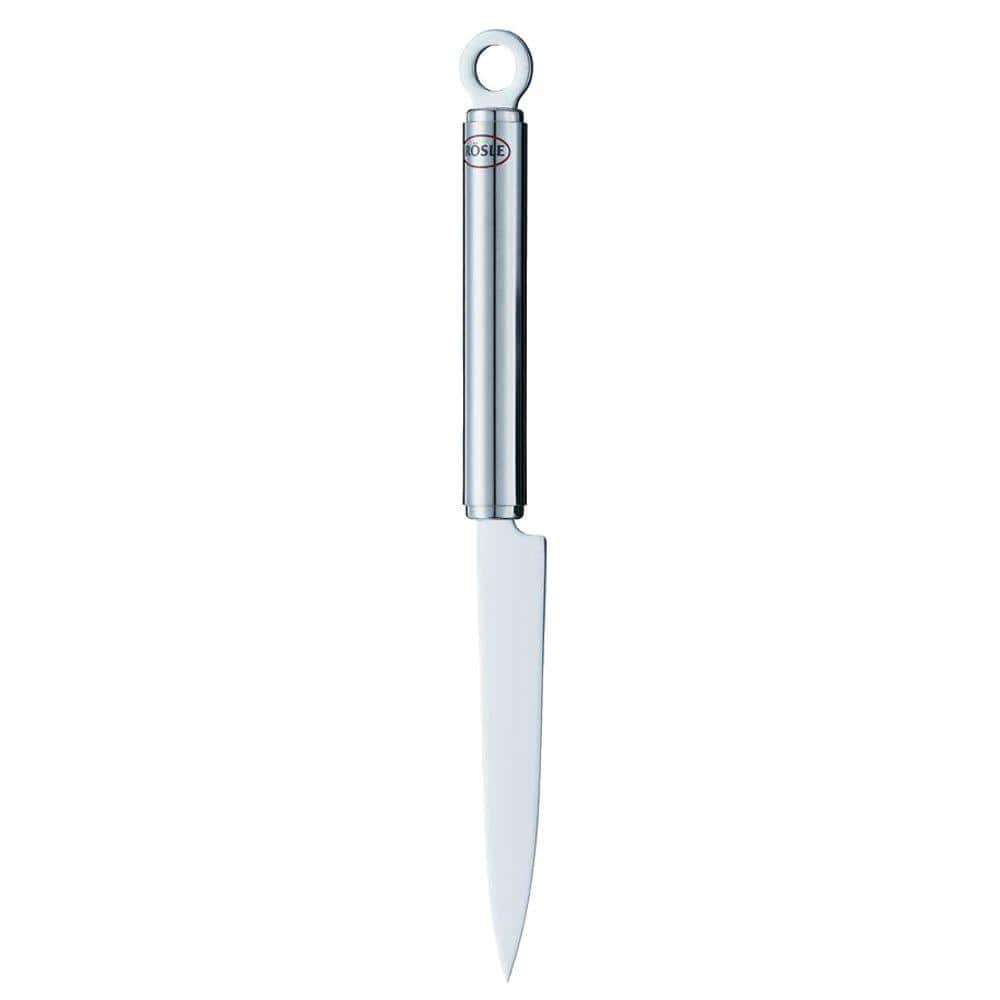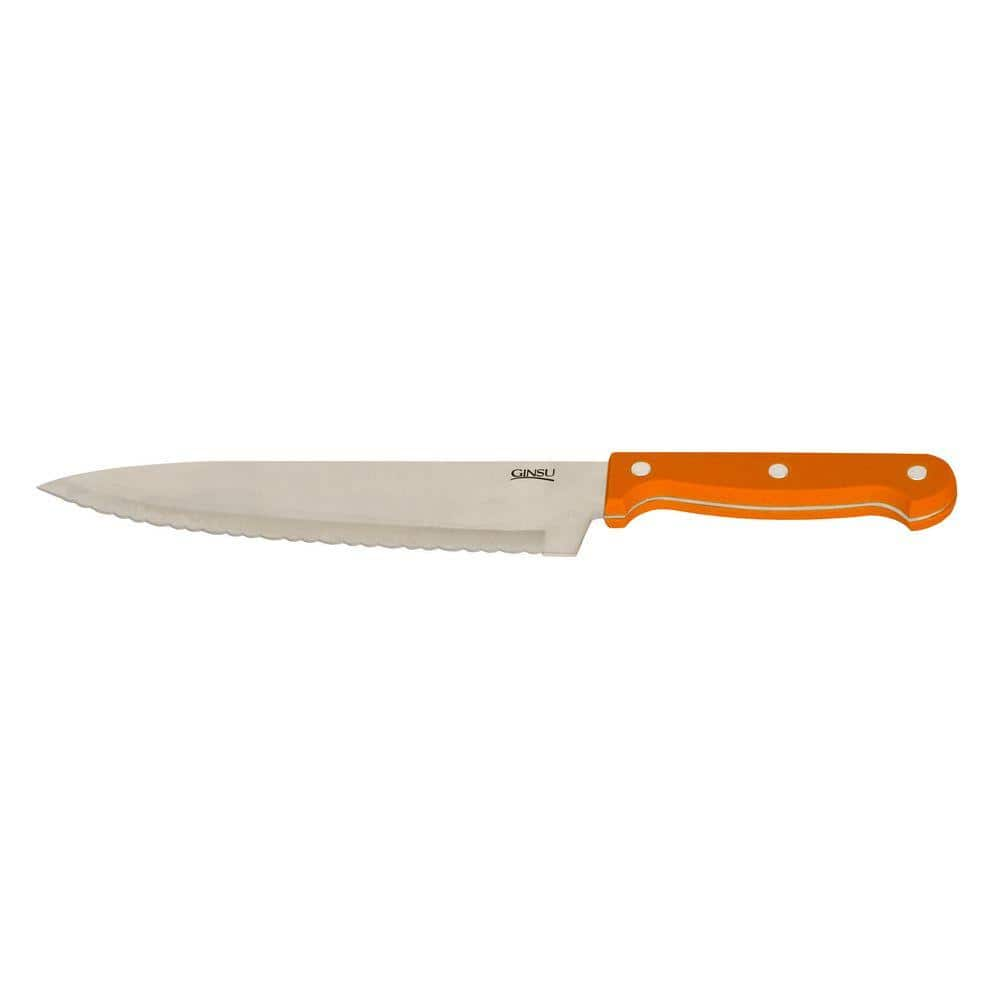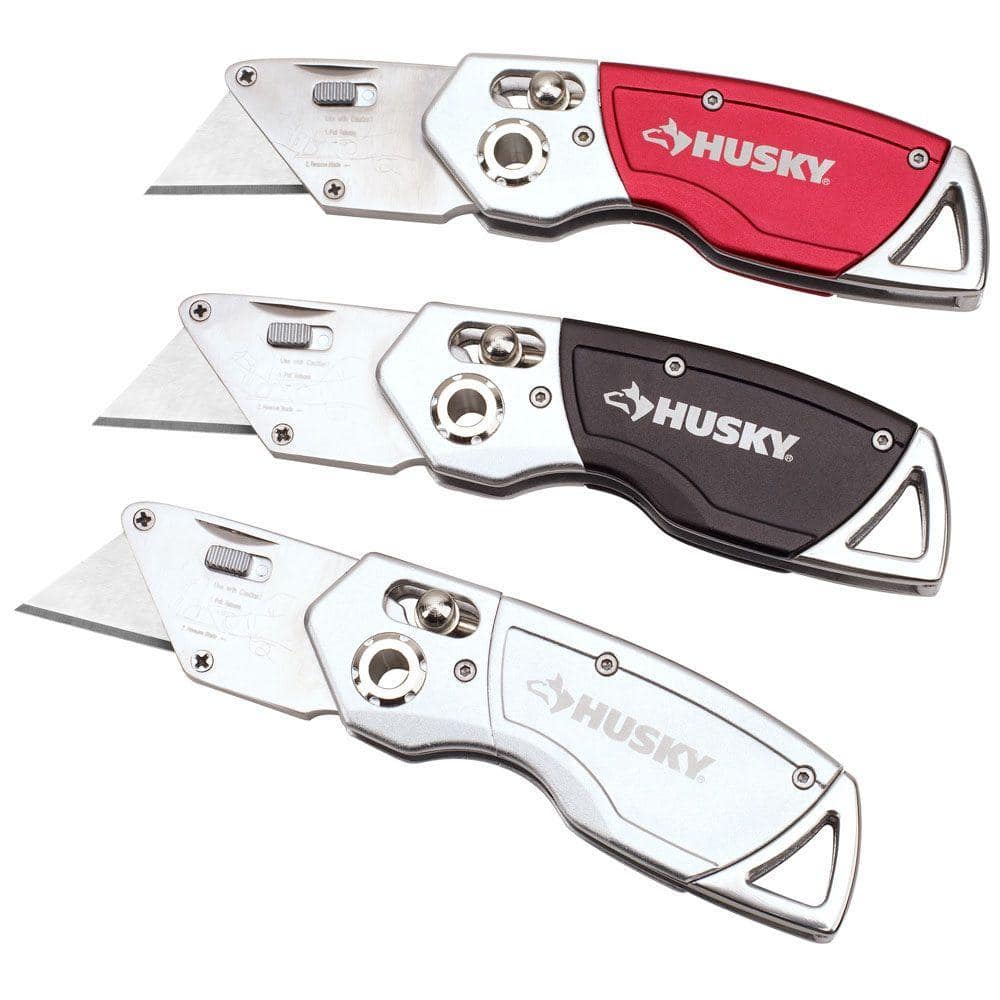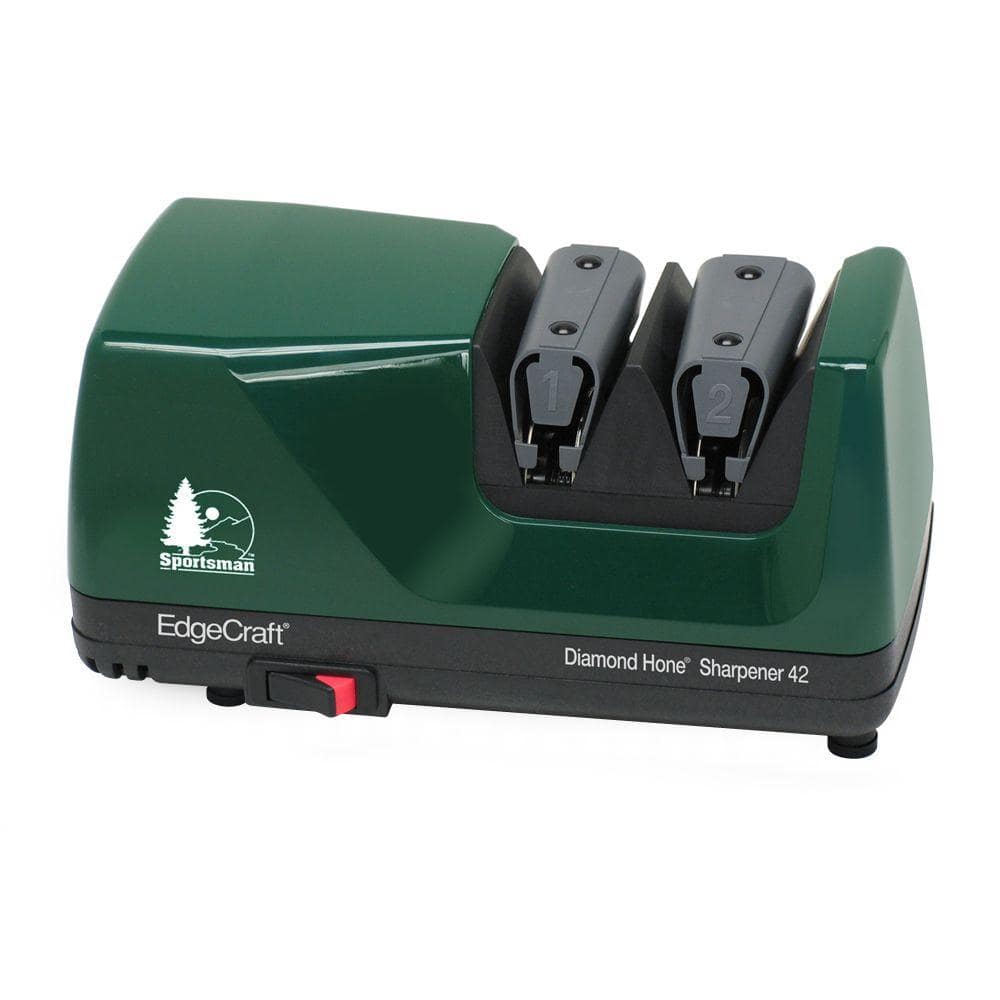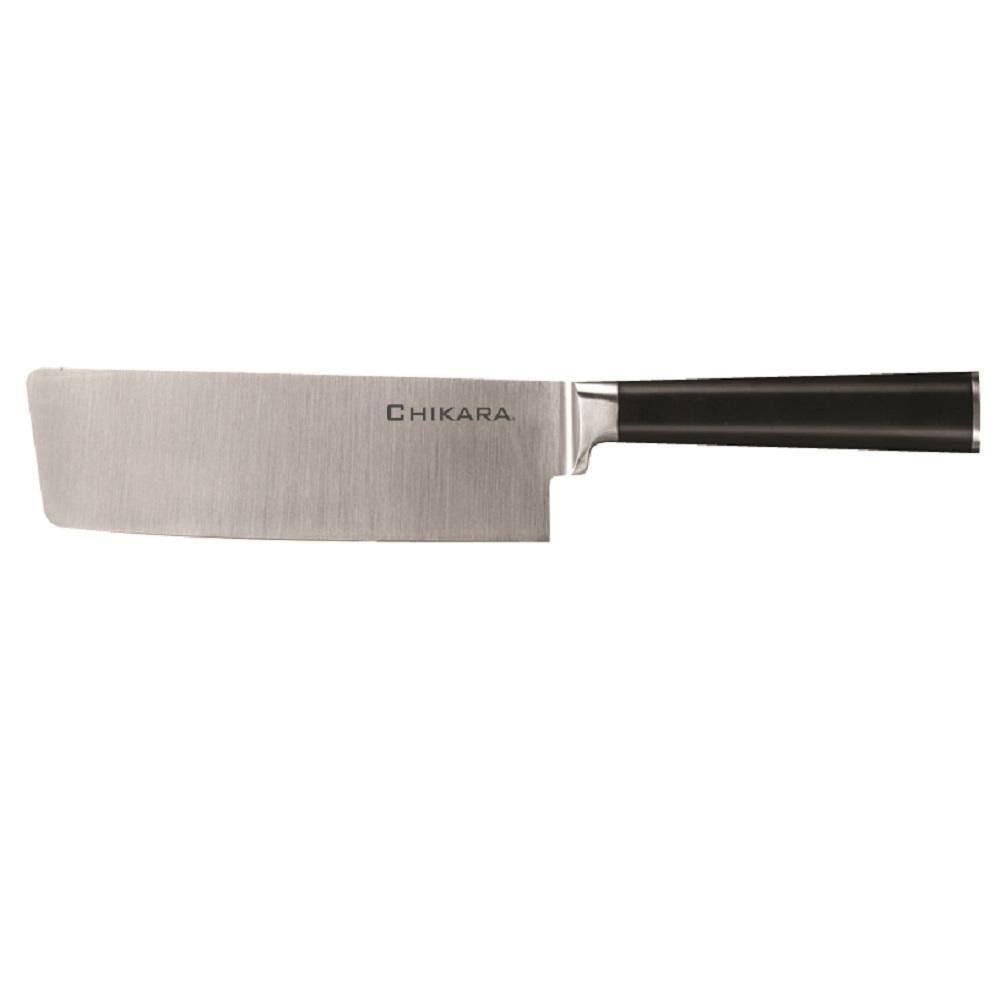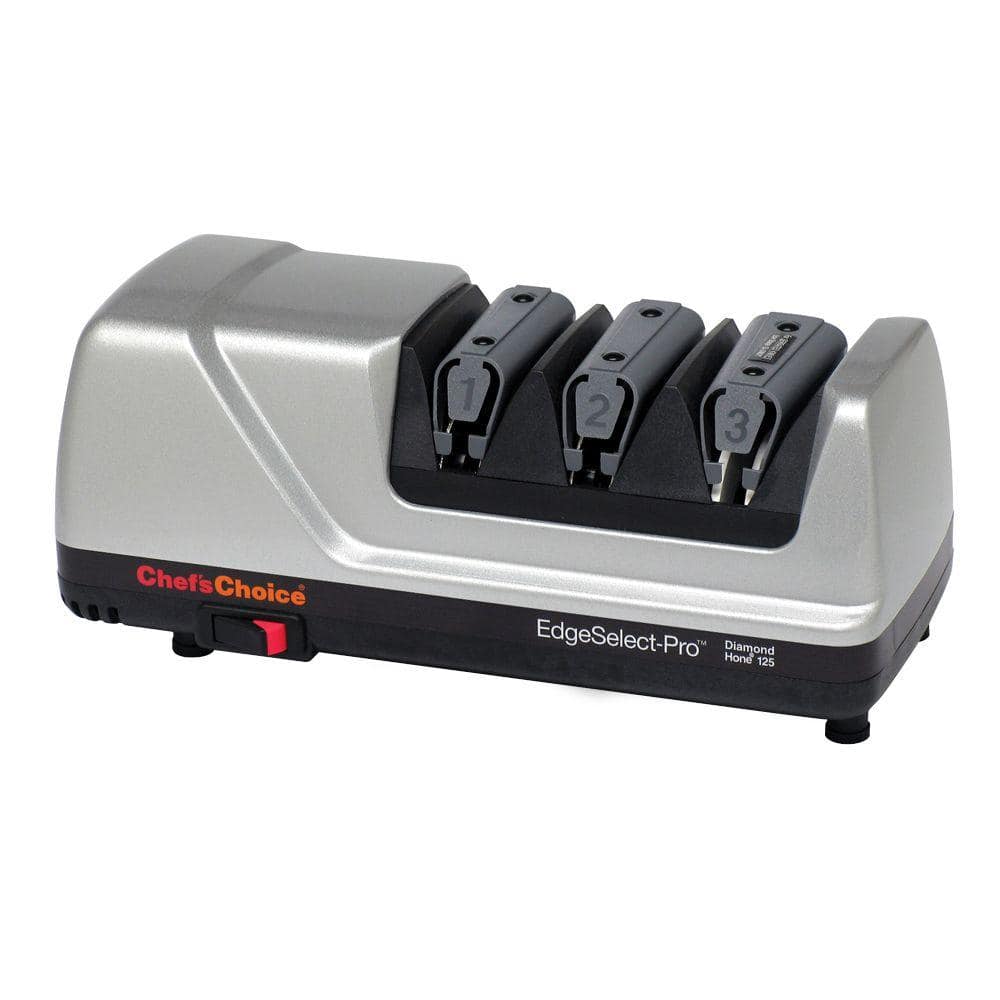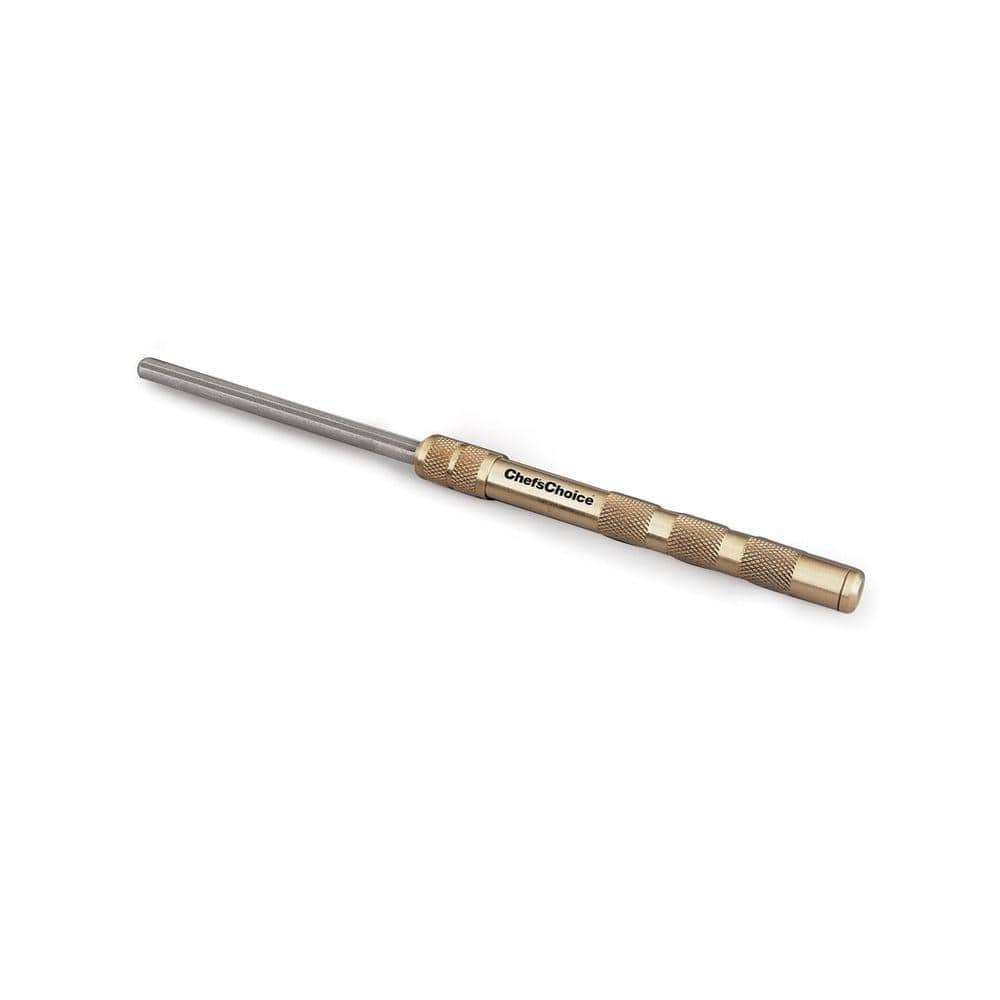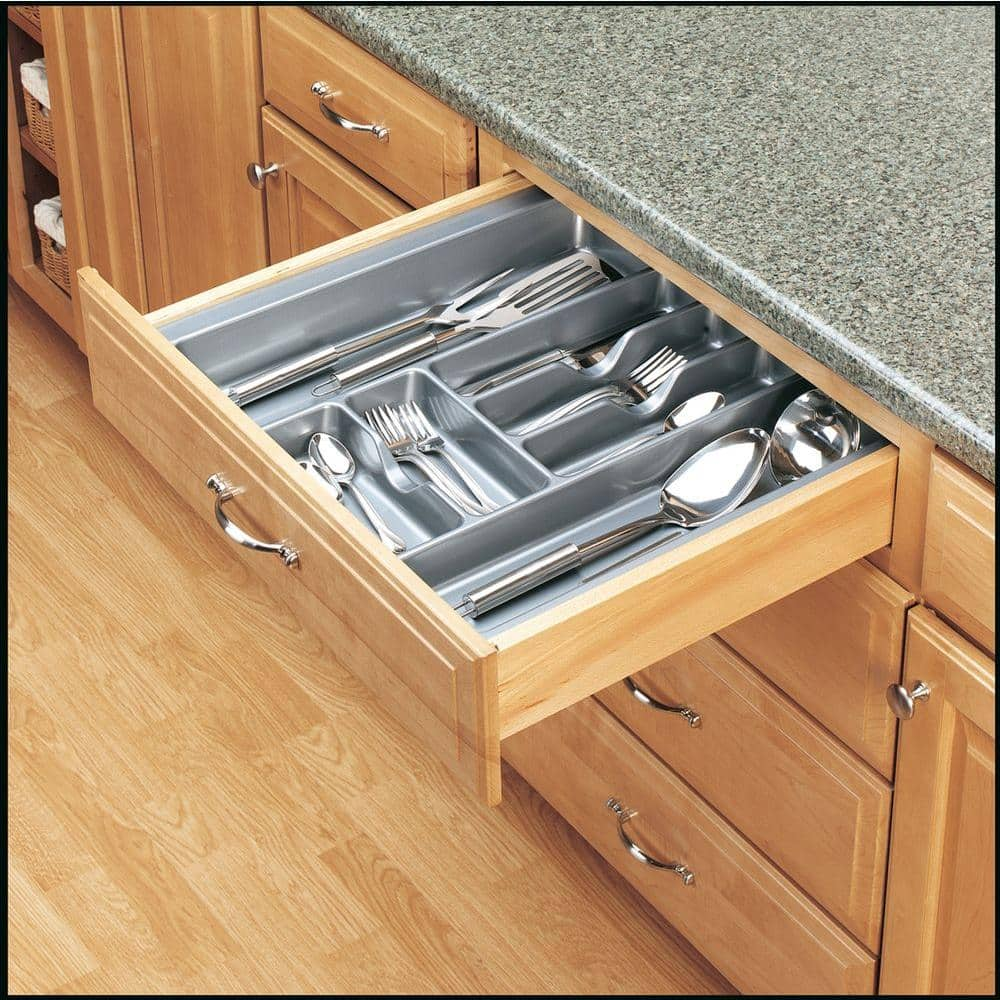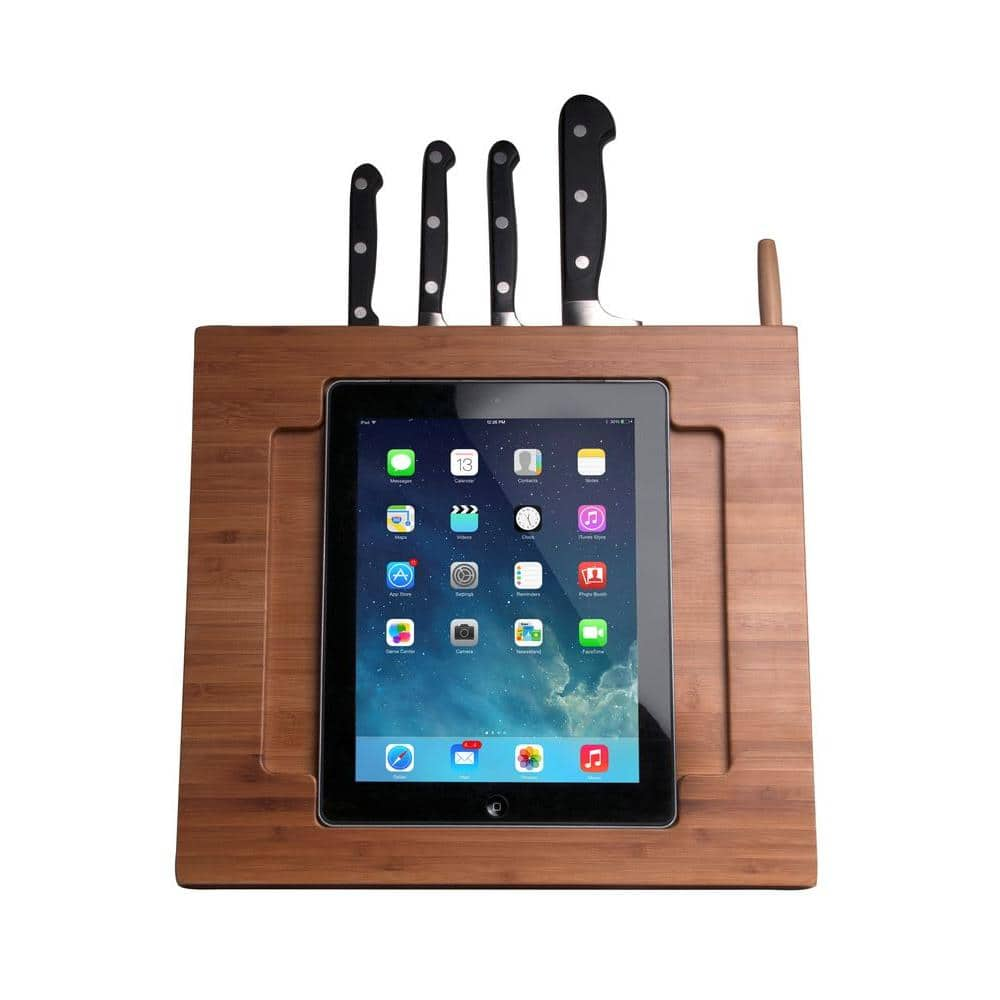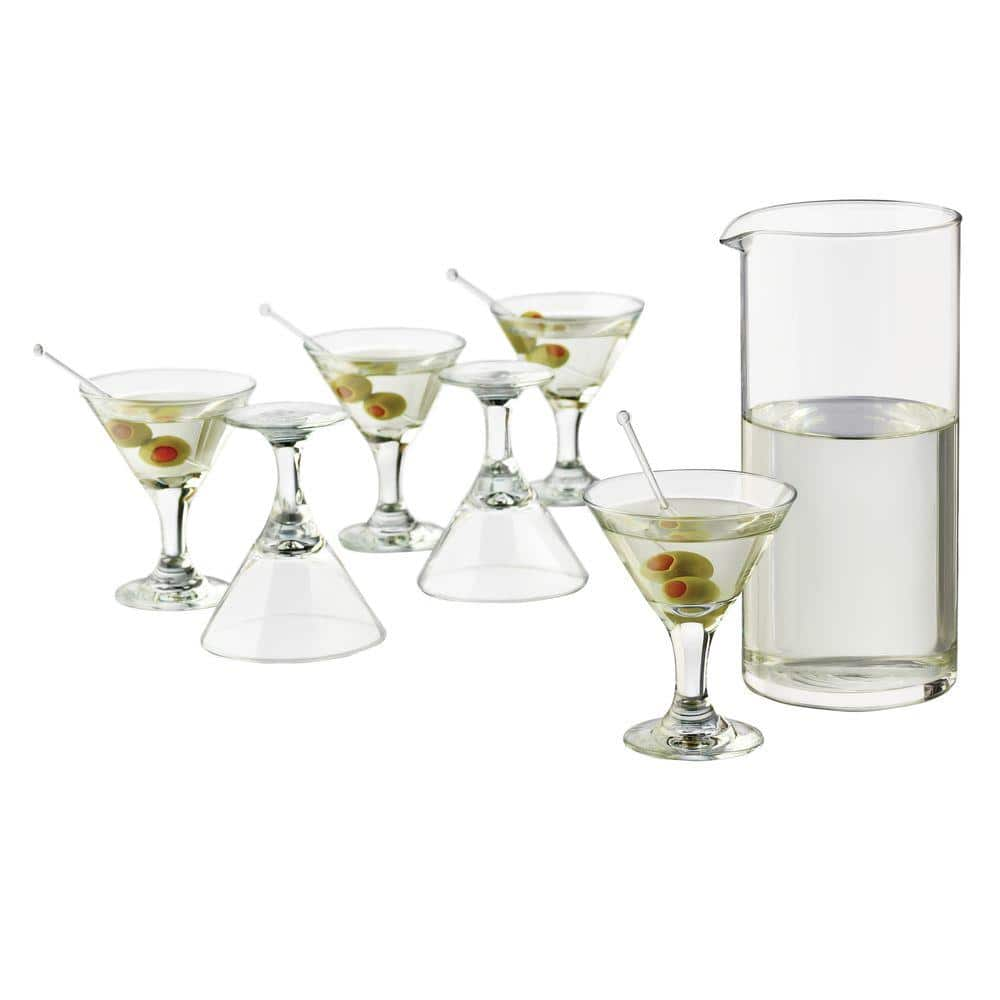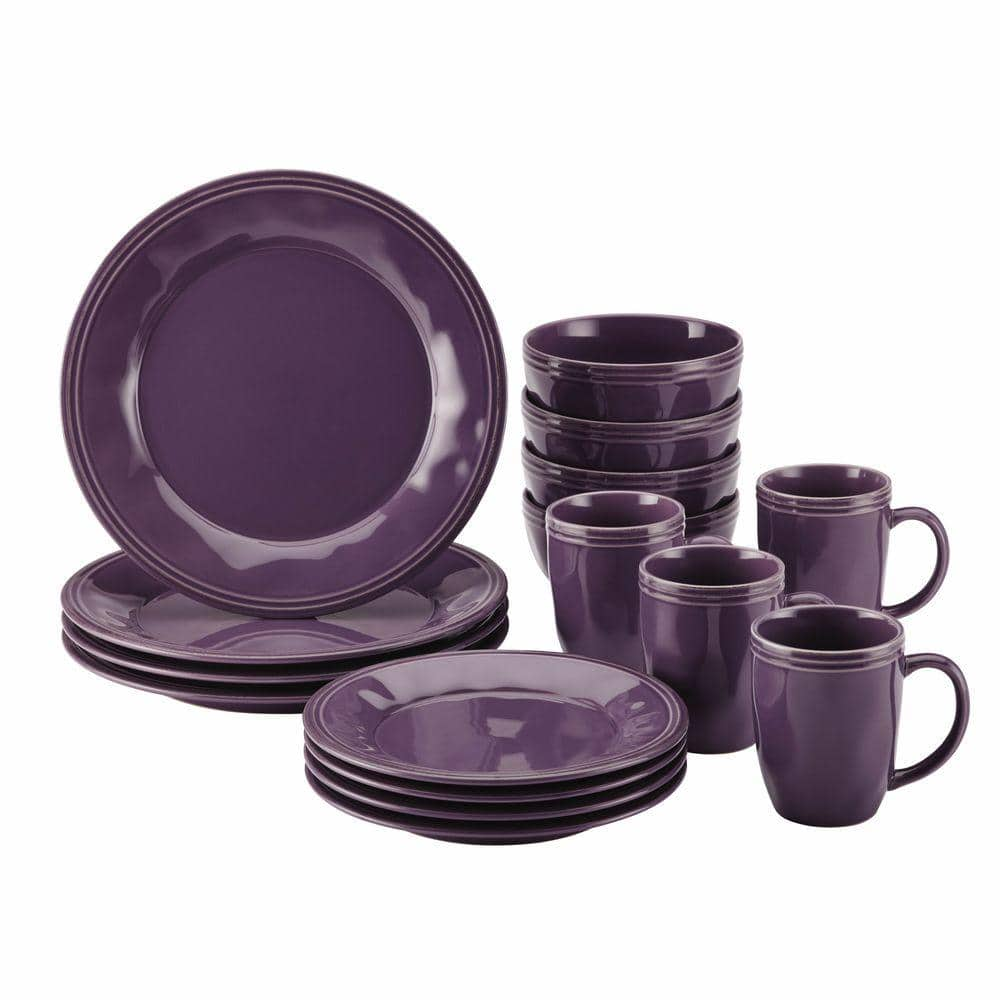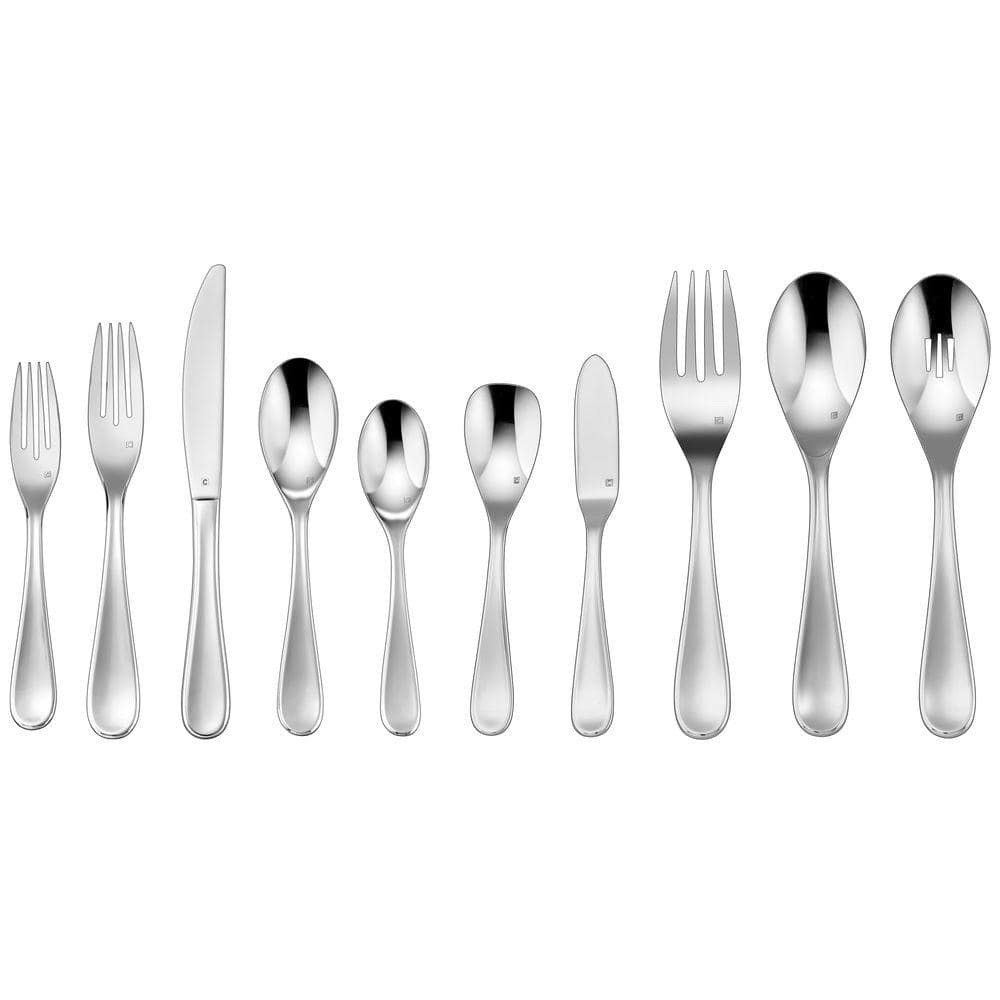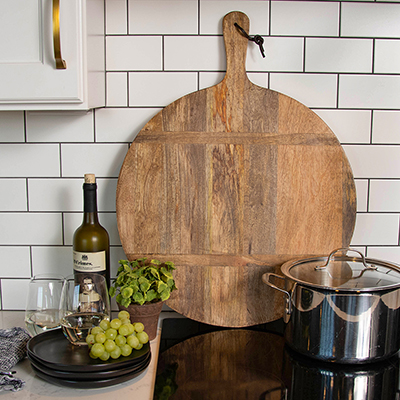Best Kitchen Knives for Home Cooks

Last updated September 7, 2023
A kitchen is not complete without a good group of knives to cut your prep and cooking tasks down to size. However, there are so many types of kitchen knives to choose from that figuring out what blades are going to be essential can be complicated. Often, a home cook may wind up with far too many kitchen knives or, worse, just one that is not suitable to all the work knives need to be able to do. This guide will review the best kitchen knives for home cooks.
Table of Contents
Chef’s and Santoku Knives
Paring Knives
Bread Knife
Carving Knife
Steak Knife
Utility and Task Knives
Chef’s and Santoku Knives
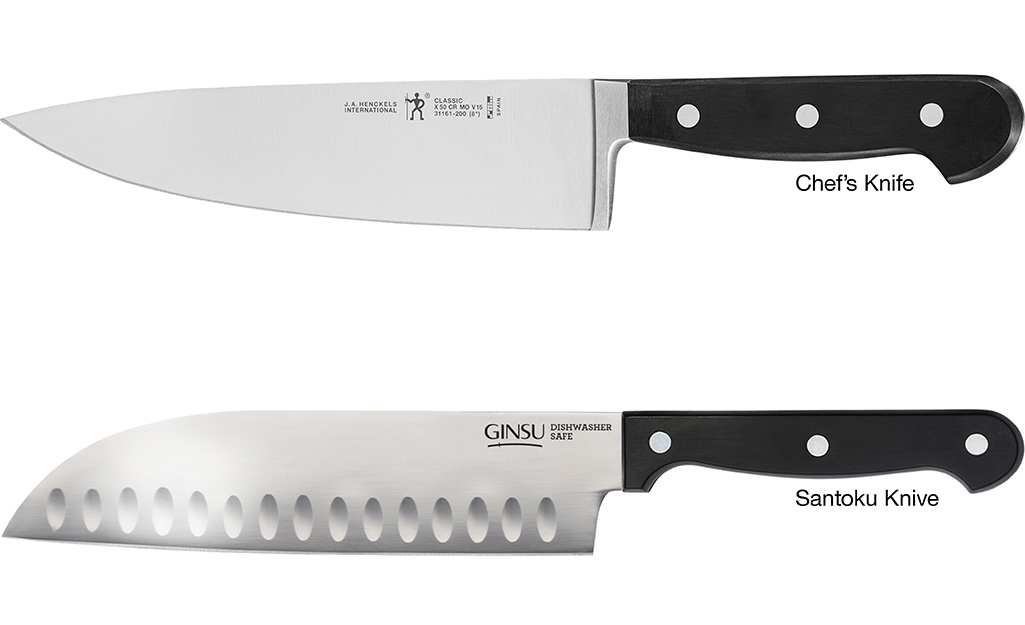
Your first knife should always be one that can be used for a wide number of kitchen tasks. Chef's knives or a santoku knife is your best choice for an all-around knife, suitable for almost any task on a cutting board.
Your first kitchen knife should be one that can be used for a wide number of kitchen tasks. Chef’s knives and santoku knives are your best choices for general prep because they’re very versatile.
A chef’s knife is usually around 8 to 12 inches long with a heavy blade. A santoku knife is typically around 7 inches long with a thinner, harder blade. You can use both types for precision cutting.
Which type is right for you depends on whether you prefer a larger or smaller knife. If a swift, rocking-style slice is what you’re after, go for a chef’s knife. The santoku is great for rapid choppy movements.
Tip: Because harder materials can damage blades, use wood or plastic cutting boards.
Paring Knives
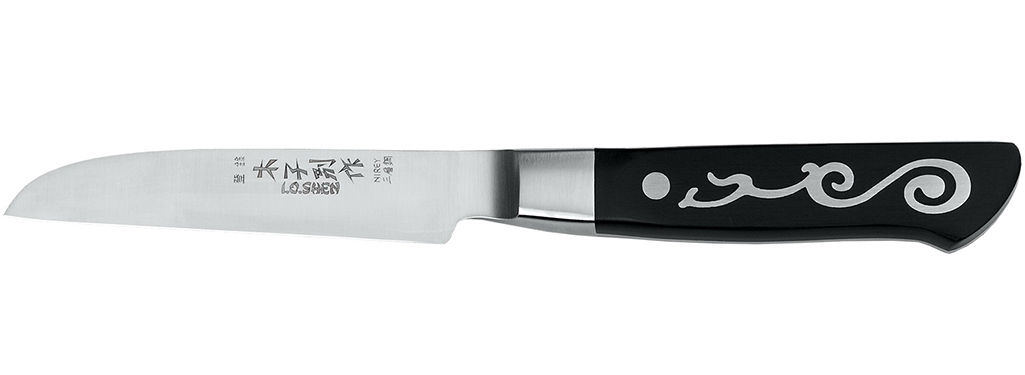
Paring knives are used for fruits and vegetables; "to pare" is to cut away the outer skin of something and is the main task of the paring knife. A paring knife is 3 to 4 inches long and is often used in the hand rather than on a cutting board.
The best paring knives are lightweight with a comfortable grip and a non-slip surface on the knife handle. The blade should be very sharp and the tip of the knife should come to a well-defined point to help the knife pierce the flesh of the produce.
With a chef's knife and paring knife, you can navigate most of your recipes easily, but there are a few other kitchen knives that can be added to your collection to get even more accomplished.
Bread Knife

A serrated bread knife cuts through thick bread crust without crushing the soft crumb beneath, resulting in perfect slices of bread. It can also be used for cakes and hard-skinned fruit and vegetables like pineapple and squash. The best bread knives will have long, narrow blades. The number of teeth per inch also makes a difference. The fewer serrations the knife has, the rougher the cut will be.
The only drawback to a bread knife is that it is more difficult to sharpen than a standard kitchen knife. However, there are sharpeners sold that are specifically for honing serrated blades.
Carving Knife
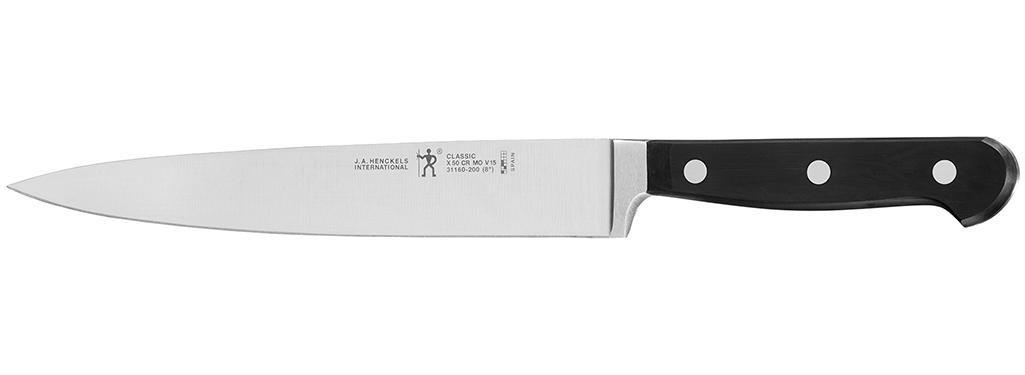
A carving knife is at least 8 inches long and the blade is much thinner than that of a chef’s knife. It is used to cut precise, thin slices of roasts and poultry.
When choosing a carving knife, select one that is longer than whatever you intend to cut. A smaller blade will be best for skirt steak, small roasts and turkey breast. Bigger is generally better for slicing up a Thanksgiving turkey or a holiday ham intended to feed a crowd.
Tip: Blade guards are a simple way to protect your knives. They allow you to store knives in a drawer without the danger of accidental injury.
Steak Knife
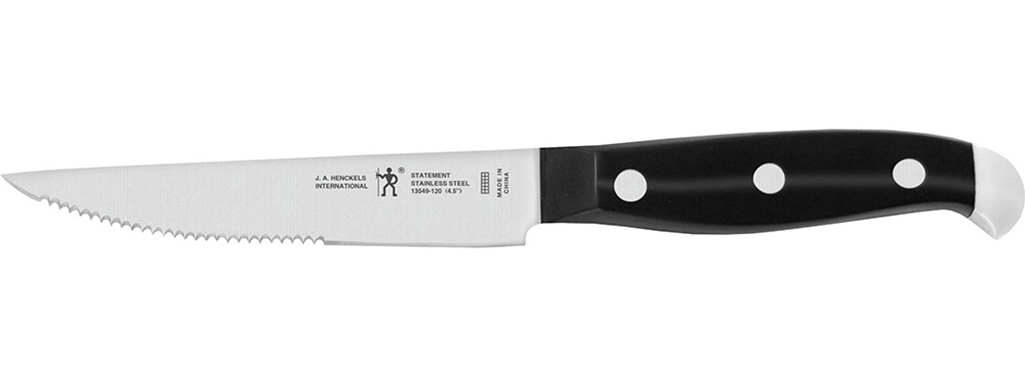
Steak knives are an important investment if your set of flatware does not include table knives that are sharp enough to cut bites of meat. Although blades are similar, steak knife handles vary. Some are perfectly straight, while others have a curvy shape. Choose whatever style is the most comfortable for you.
Tip: Wash all knives by hand with a dish sponge instead of putting them in the dishwasher. The high heat and powerful water spray could damage them. Also, avoid scouring pads, which can scratch blades.
Utility and Task Knives
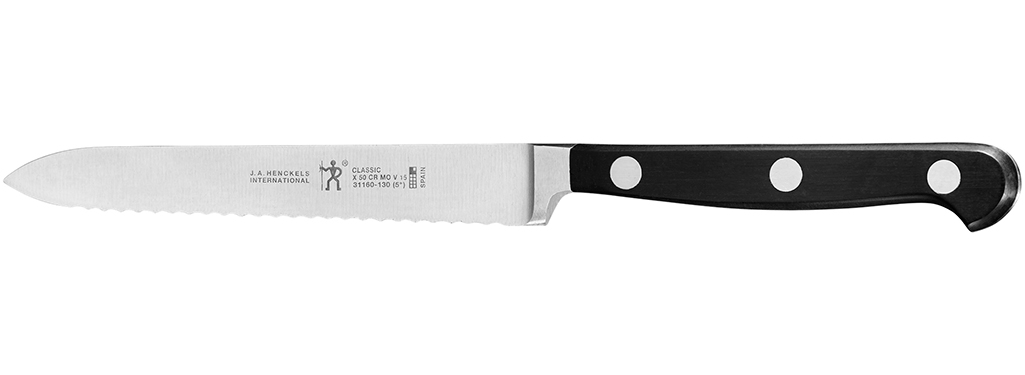
When you need to tackle a little job like slicing up an onion for sandwiches, a utility knife can be a good option. At 5 to 6 inches in length, it’s smaller than a chef’s knife and allows you to make quick cuts. Styles of utility knives vary. Some feature smooth blades like paring knives, while others have teeth.
Depending on what you regularly serve, you may wish to buy specialty task knives. Manufacturers design these knives for specific jobs like cutting grapefruit or cheese.
Filet Knife
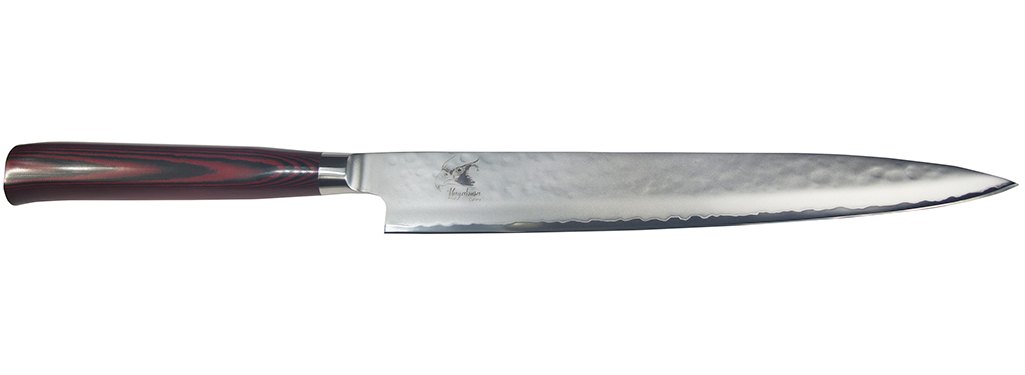
A filet knife removes the bones and skin from fish. This specialty knife is 7 to 10 inches long on average. It has a long, slender blade that flexes, so you can make sweeping movements.
Boning Knife

If you want to do at-home butchering, a boning knife will come in handy. Its sharp point and narrow blade can easily separate bones from meat. You can use one to create your own pork, beef or poultry cuts. Some people also reach for a boning knife along with a carving knife when carving whole roasted poultry.
Cleaver
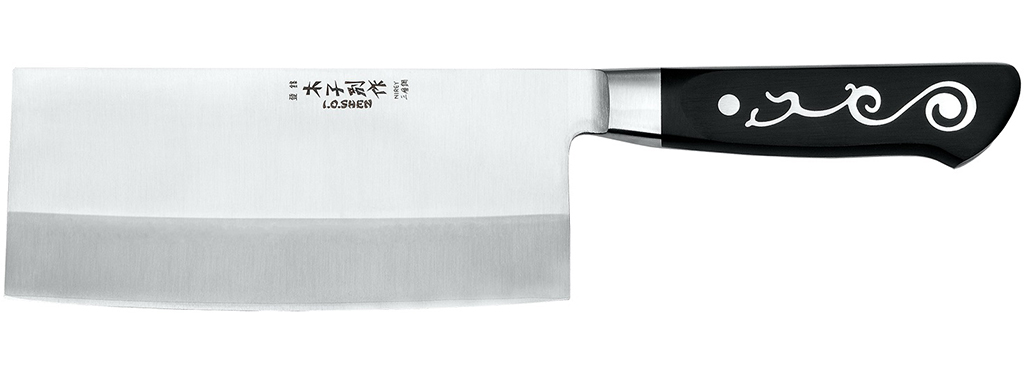
A cleaver is essential if you plan on butchering, along with a boning knife. A 7-inch striking knife easily severs bones and joints, splits lobster and chops very thick vegetables.
Electric Knife

An electric knife lets you complete challenging cutting tasks more quickly. This type of knife has a moving blade powered by a motor. When turned on, the quick movements of the blade allow the knife to cut through crusty bread, meat, poultry and other foods with ease. Some electric knives have replaceable or rechargeable batteries, while others plug into an electrical outlet.
Knife Sets
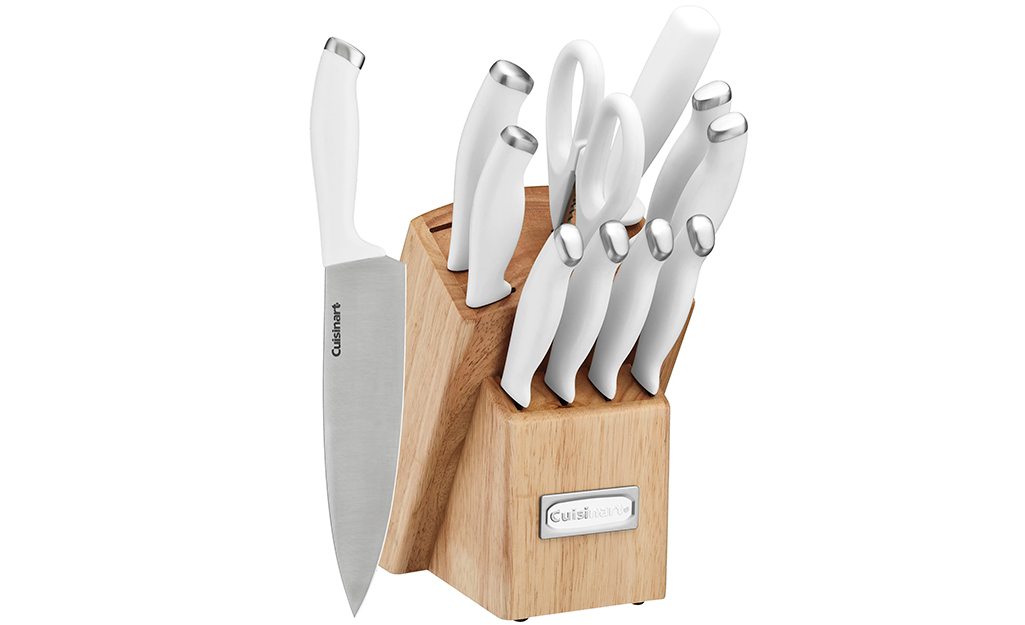
Want to build your knife collection fast? Consider knife sets. They give you an assortment of knives for performing various tasks, all for one price. Some also include sharpeners and a knife block for storage. In addition to knives, sets also frequently provide kitchen shears for trimming fat, snipping fresh herbs and other tasks.
Knife Materials and Construction
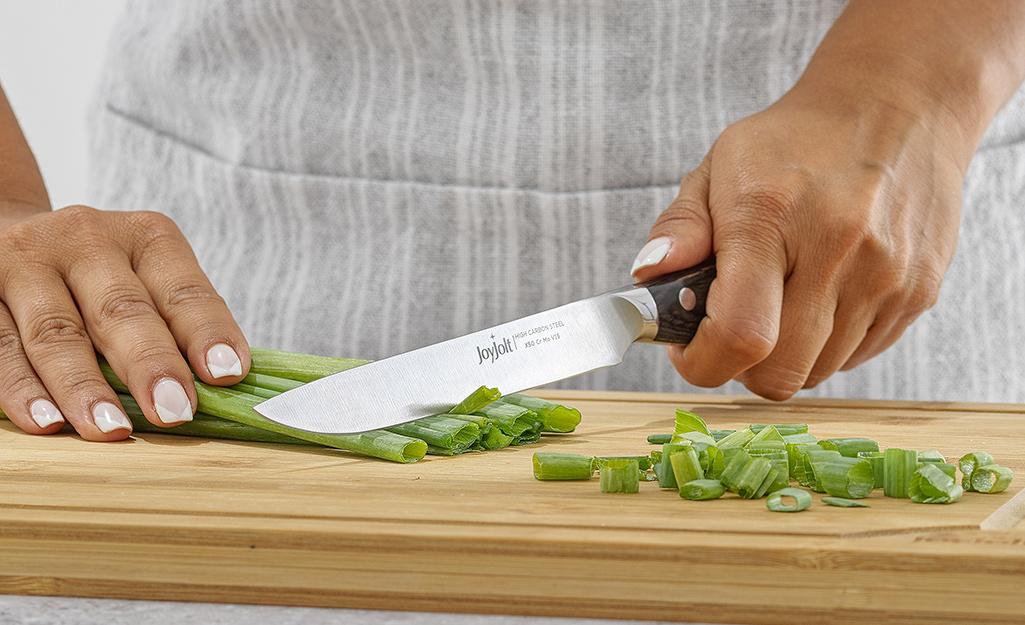
The two factors that most affect the price of a knife are the materials it's made of and how it's made.
Material:
- Stainless steel: This iron alloy resists corrosion and is the most common blade material. Lower grades are softer, which means they can't take as sharp an edge and need to be sharpened more often. Higher grades of stainless steel, especially those alloys including molybdenum, are harder. High-carbon stainless steel is top of the line. The higher the grade, the higher the price.
- Titanium-plated steel: Titanium-plated knives are extremely low-maintenance and won't rust. They're almost impossible to break. They last for years, if not decades. However, they don't hold as sharp an edge as high-grade stainless steel. These knives are priced comparably to stainless steel.
- Ceramic knives are exceptionally sharp, producing thin, accurate slices. They're also very light and prone to chipping, so they shouldn't be used on harder items like tough vegetables and bones. They won’t rust, don’t absorb odor and are easy to maintain, retaining their cutting edge much longer than metal knives. They're also more expensive.
Method of Construction:
Most metal knives are either stamped or forged.
- Stamped knives are the least expensive. They are cut from a single piece of sheet metal, then ground and edged. Stamped knives aren't as strong or as heavy as forged knives. They can't hold quite as sharp an edge, but they're light and perform very well.
- Forged knives are less likely to bend over time, and they hold a sharper edge longer. They also have a thick bolster between the blade and the handle that guards your fingers and helps distribute weight. To create a forged knife, a single piece of molten steel is formed and beaten into shape. This results in a sturdier, stronger and heavier blade. Due to the complexity of the construction process, forged blades are more expensive than stamped.
Knife Maintenance
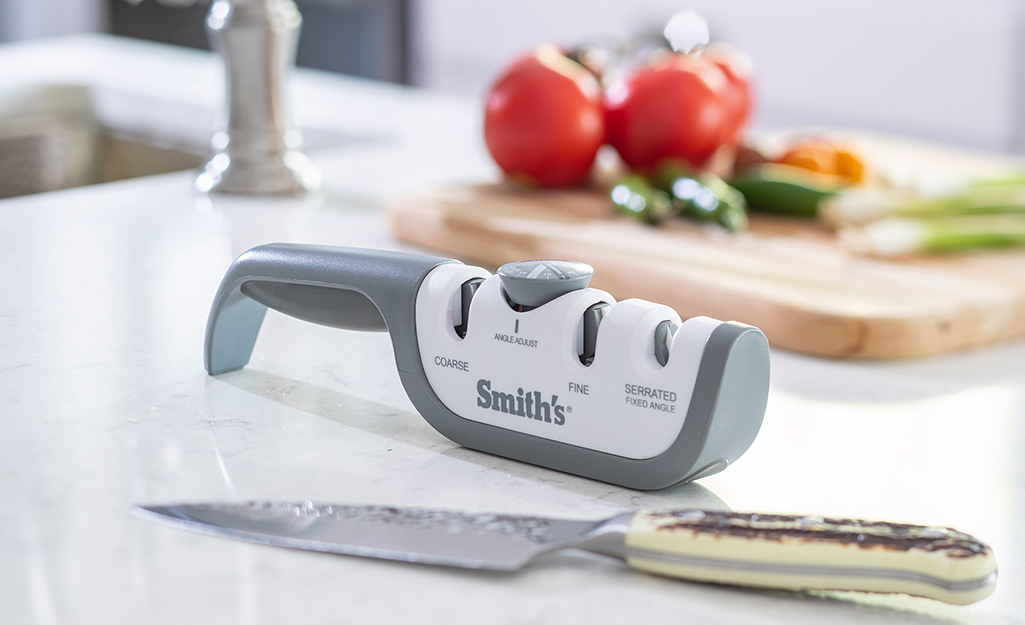
Before purchasing, you must consider the time and effort you're willing to put into cleaning and sharpening your knives.
Cleaning:
All knives, regardless of material and construction, should be washed by hand. Avoid putting them in the dishwasher. The high heat and powerful water spray can be damaging. You also shouldn't use scouring pads or abrasive cleaners on any knife.
Stainless steel knives resist corrosion, but they may still form spots over time. Hand wash and dry stainless steel knives immediately after use.
Titanium-plated steel knives resist rust. It is not necessary to wash them immediately, and there's no need to dry them.
While you must be careful not to chip them, ceramic knives are the easiest to clean. They're non-porous, so food rinses right off. Since they don't rust, there's no need to immediately dry them after washing.
Sharpening:
There are several methods of knife-sharpening varying on convenience and knife style. For instance, ceramic knives need a sharpener with diamond grit.
Storing Your Knives
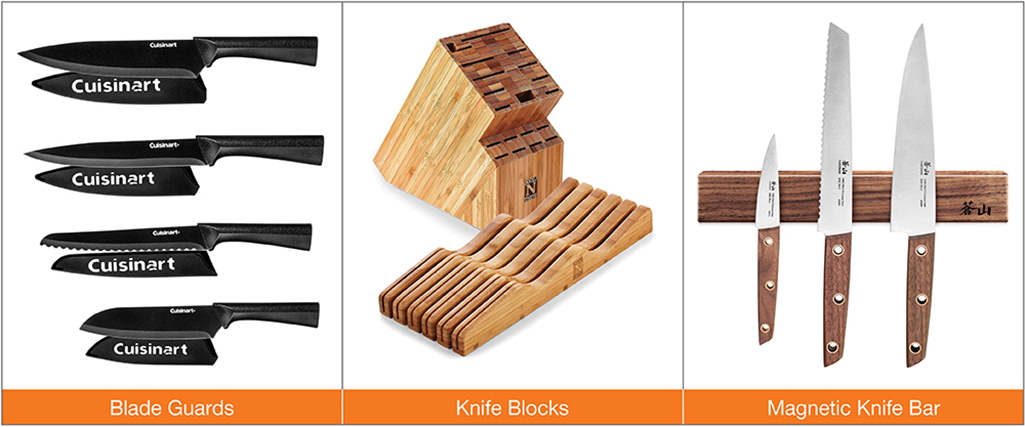
Storing your knives properly is important, both for safety and for maintaining the quality of the blades.
- Blade guards are the most basic way to protect your knives. These allow you to store knives in a drawer without the danger of accidental injury.
- A knife block is the best storage option as it will keep your knives organized and separated. Choose from a countertop option or a block that fits into a drawer. Many of the best knife sets include a block.
- A magnetic knife bar puts your stainless steel blades on display while keeping them at hand.
Cutting Boards
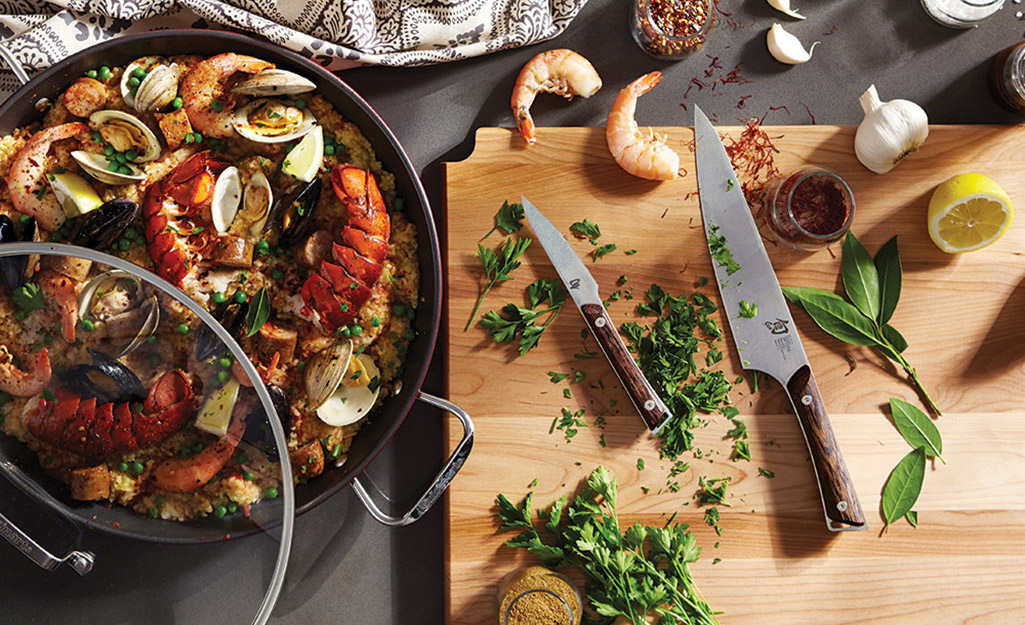
Use wood or plastic cutting boards. Cutting boards made of harder materials like stone will damage all blades; ceramic blades will actually chip or break.
Find Your Knives
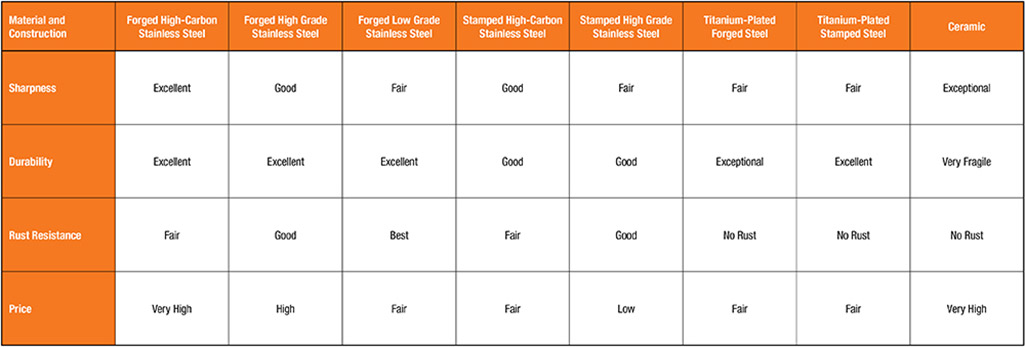
This table provides a quick overview to help you determine which knives are right for you.
Types of Knife Sharpeners

Electric Knife Sharpeners: Electric knife sharpeners are the fastest and most convenient way to keep straight-edged stainless steel knives sharp. They will always sharpen at the same angle, and they can even repair damaged knives. However, they generally don’t work with forged knives, Asian-style knives or serrated knives.
Manual Knife Sharpeners: Manual sharpeners are inexpensive, take up very little space and can be used on any knife.
Sharpening Stones: Whetstones can also be used on any knife, but they require skill. You can use them to sharpen your knife at any angle you want, but you must maintain the angle yourself. It also takes longer to sharpen your knife than using a manual sharpener.
Honing Steels: Honing steels can help delay the need to sharpen a straight-edged knife but they will not completely resharpen a blade.
Now that you understand the best kitchen knives for home cooks, you can build your collection. Make a list of the knives you need and set a budget. Ready to upgrade your chef tools? The Home Depot delivers online orders when and where you need them.
